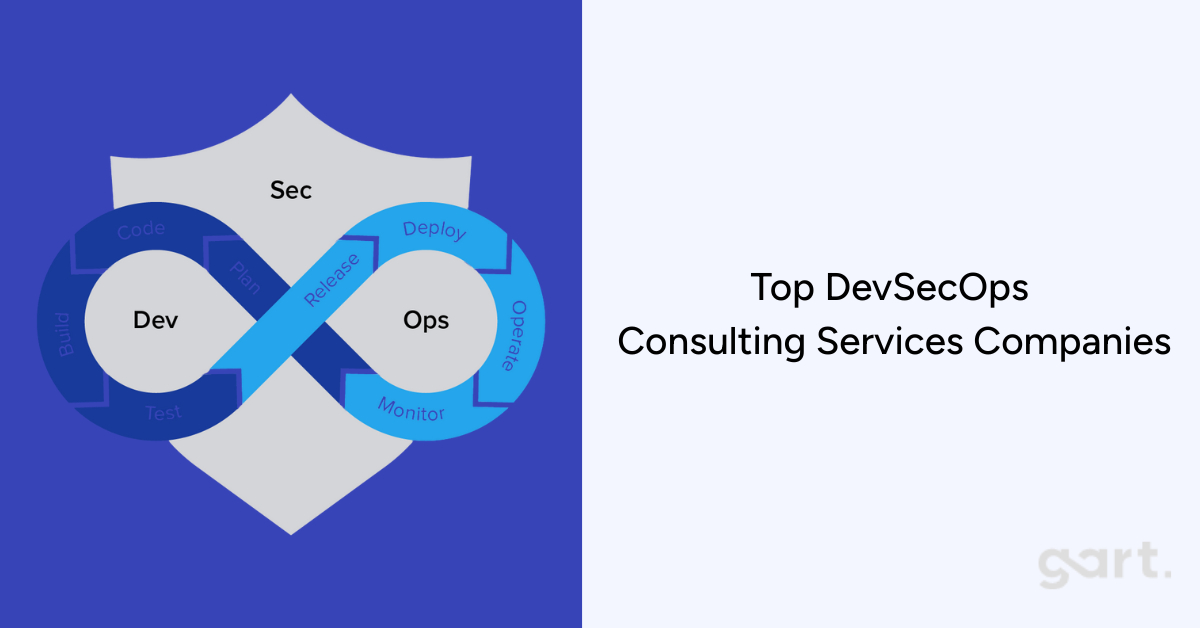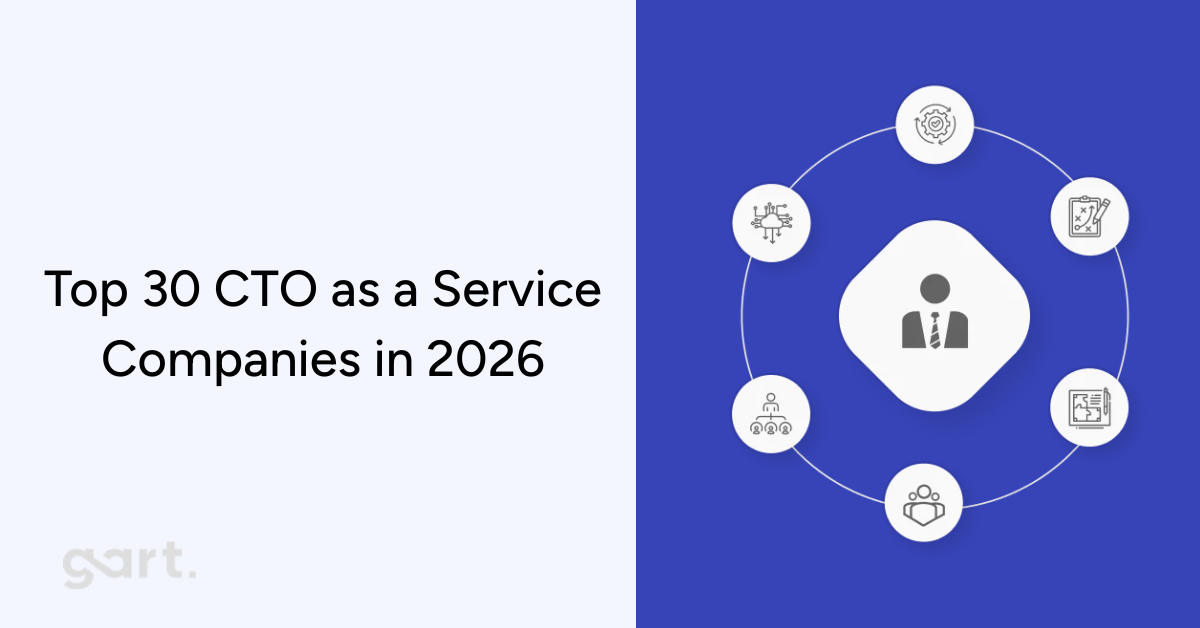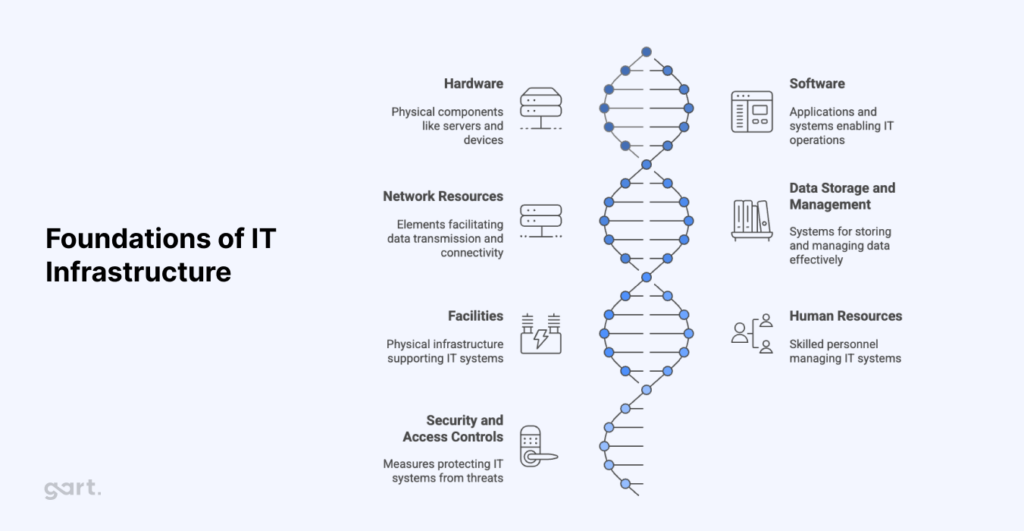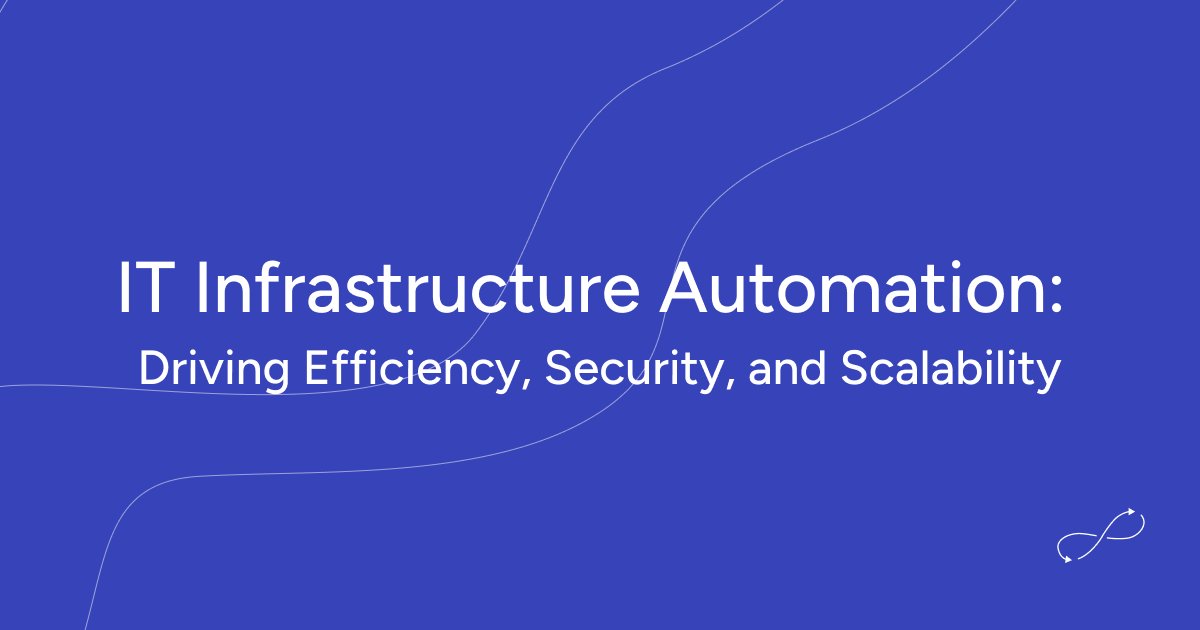
Cyberattacks in 2026 aren't just about ransomware anymore. They're smarter, faster, and deeply embedded in software supply chains. That’s why companies today are going beyond traditional DevOps. They're integrating security into every part of the development lifecycle — and that approach has a name: DevSecOps.
DevSecOps isn't just a methodology — it's a culture shift, a set of tools, and a leadership strategy that treats security as a first-class citizen in software delivery. In a world where regulations are tighter, cloud environments are more complex, and software teams are deploying multiple times per day, DevSecOps has become non-negotiable.
This article brings you a hand-picked, in-depth look at the top DevSecOps consulting service providers in 2026, ranging from global tech giants to highly specialized regional firms. Each one is evaluated based on technical capabilities, real-world use cases, security integrations, Clutch reviews, and industry relevance.
Whether you're a fast-moving SaaS startup, a fintech firm protecting sensitive transactions, or a healthcare company under HIPAA pressure, these providers will help you secure your pipelines — without slowing down innovation.
What is DevSecOps?
DevSecOps stands for Development, Security, and Operations. It's an evolution of DevOps that ensures security is embedded into every stage of the software delivery process, not bolted on at the end.
It addresses one of the biggest problems in modern tech: the disconnect between speed and safety. Traditional development pushes for faster releases. Security, on the other hand, often slows things down. DevSecOps bridges this gap by:
Integrating security tools directly into CI/CD pipelines
Automating vulnerability scans
Using policy-as-code to enforce secure practices
Enabling real-time threat modeling
Empowering developers to write secure code from day one
In short, DevSecOps ensures your code, infrastructure, and teams are resilient — even at scale.
Why DevSecOps Matters in 2026
Let’s be real: cybersecurity isn’t optional anymore. With cloud-native systems, containerized deployments, and APIs running across borders, companies face complex, multi-layered threats.
In 2026:
Software supply chain attacks are up by 300%
Dev teams ship code 40x faster than 2018
Regulations like GDPR, HIPAA, ISO 27001, SOC 2, and NIS2 demand security baked into software, not stapled on later
This is where DevSecOps shines. It:
Reduces vulnerabilities early, saving millions in potential breach costs
Builds a culture of shared responsibility between devs, ops, and sec
Automates security compliance through tools and scripts
Prevents reputational damage and regulatory penalties
Companies using DevSecOps experience:
60% fewer production incidents
80% faster security fixes
70% reduction in audit-related delays
How We Chose the Top DevSecOps Companies
To rank the best consulting companies for DevSecOps in 2026, we used a balanced evaluation approach focused on:
Evaluation Criteria:
Clutch ratings and reviews (4.7+ only)
Years of experience in DevOps & AppSec integration
Expertise in cloud-native, Kubernetes, and IaC security
Usage of modern tools like Snyk, Prisma Cloud, Checkmarx, etc.
Real-world case studies and client results
Focus on regulated industries like finance, healthcare, SaaS
Ability to scale from startups to enterprise-level implementations
Let’s dive into the leaders…
1. Gart Solutions
Clutch Rating: 4.9/5Specialties: GitOps, Kubernetes Security, DevOps & DevSecOps Consulting
Gart Solutions has emerged as one of the most reliable DevSecOps consulting partners in 2026. Based in Georgia but serving clients worldwide, Gart combines deep cloud-native expertise with secure-by-design DevOps architectures.
Their consultants are known for integrating security into CI/CD pipelines, Infrastructure-as-Code (IaC), and Kubernetes clusters. What makes Gart unique is their developer-first mindset. They don’t just patch vulnerabilities; they redesign workflows so that developers can avoid creating them in the first place.
From fintech startups to healthcare platforms, Gart has consistently delivered secure pipelines, automated compliance audits, and hands-on threat modeling as part of their CTO-level advisory services.
Why Choose Gart Solutions:
GitOps-first approach with security enforcement
DevSecOps for startups, SaaS, and cloud-native apps
Excellent documentation and real-time collaboration tools
Strong presence in Eastern Europe and U.S. markets
If you want DevOps that’s secure by default, Gart Solutions delivers at every layer.
2. Snyk
Clutch Rating: 4.8/5Specialties: Developer Security, Container & IaC Scanning, Open Source Protection
Snyk isn’t just a tool — it’s a DevSecOps movement. As of 2026, Snyk remains a leader in developer-centric security with consulting arms that help organizations build DevSecOps from the inside out.
They specialize in SCA (software composition analysis), SAST (static analysis), and IaC security, all built for developer adoption. Snyk’s consulting services include CI/CD integrations, secure coding training, and pipeline hardening.
They work well with modern stacks like Node.js, Python, Kubernetes, and Terraform — and integrate seamlessly with GitHub, GitLab, Bitbucket, and Azure DevOps.
Why Choose Snyk Consulting:
Developer-first DevSecOps tooling
Seamless integrations with modern CI/CD
Active risk posture dashboards and compliance support
AI-driven vulnerability remediation assistance
Ideal for cloud-native dev teams that need to scale security without slowing down engineering velocity.
3. Prisma Cloud by Palo Alto Networks
Clutch Rating: 4.7/5Specialties: Full-stack Cloud Security, Code-to-Cloud Visibility, Compliance Automation
Prisma Cloud by Palo Alto Networks has become a cornerstone of DevSecOps architecture for enterprise environments. As cloud security grows more complex, Prisma Cloud helps organizations secure every layer — from the codebase to cloud runtime — all within a single unified platform.
Their consulting services are designed for organizations seeking end-to-end DevSecOps enablement. This includes:
Infrastructure-as-Code (IaC) security (Terraform, CloudFormation)
Container and Kubernetes workload protection
Cloud Identity & Access Management (IAM) analysis
Compliance-as-code implementation
Prisma Cloud’s consultants help companies align with regulations like PCI-DSS, HIPAA, GDPR, and SOC 2 by automating real-time policy enforcement.
Why Choose Prisma Cloud Consulting:
Ideal for multi-cloud and hybrid cloud DevSecOps
Strong policy engine for continuous compliance
Visibility from development to production
Tight integration with CI/CD pipelines and SCMs
For enterprises needing broad cloud visibility with granular security, Prisma Cloud is the gold standard in 2026.
4. Checkmarx
Clutch Rating: 4.8/5Specialties: SAST, SCA, Developer Security Training, CI/CD Scanning
Checkmarx has long been one of the most respected names in secure application development, and their DevSecOps consulting services reinforce that reputation in 2026.
Their strength lies in empowering developers to detect and fix vulnerabilities at the source, using automated tools like:
Static Application Security Testing (SAST)
Software Composition Analysis (SCA)
API Security Testing
Developer-focused secure coding education
Checkmarx consultants work hand-in-hand with DevOps teams to implement shift-left security practices. They also help configure CI/CD environments to fail builds on critical vulnerabilities and integrate code scanning at every touchpoint.
If you're trying to build a culture of secure coding, Checkmarx is the right partner to harden your pipelines without hindering development speed.
5. Cycode
Clutch Rating: 4.8/5Specialties: SCM Security, CI/CD Governance, Secrets Management, Pipeline Integrity
Cycode is one of the fastest-growing names in the DevSecOps ecosystem — and for good reason. Their consulting services are tailor-made for companies looking to secure the software supply chain, which remains one of the most targeted and vulnerable areas in modern DevOps.
They help organizations implement:
Pipeline-as-Code governance
Secrets detection and remediation
Source control protection (GitHub, GitLab, Bitbucket)
Risk scoring across your entire DevSecOps toolchain
Cycode is designed with modern development in mind, offering zero-friction integrations and a single-pane-of-glass dashboard for all AppSec activities.
If your goal is to secure your code from the moment it’s committed to the moment it’s deployed, Cycode gives you the visibility and tools to make it happen.
6. ArmorCode
Clutch Rating: 4.7/5Specialties: AppSec Posture Management, Security Orchestration, Toolchain Unification
ArmorCode has emerged as a game-changer in the DevSecOps orchestration space. In 2026, the biggest AppSec problem isn’t lack of tools — it’s lack of coordination. That’s where ArmorCode comes in, helping companies centralize and automate security workflows across teams, tools, and environments.
Their consultants help unify all your AppSec tooling (Snyk, Checkmarx, Prisma, SonarQube, etc.) into a single visibility and orchestration layer. They also implement:
Security posture dashboards
Policy-based automation triggers
Third-party risk management
It’s especially useful for large teams managing multiple products or dev teams spread across geographies.
ArmorCode is ideal for companies drowning in disconnected security alerts who need clarity, structure, and speed.
7. JFrog
Clutch Rating: 4.8/5Specialties: Artifact Scanning, DevSecOps for Binary Management, Continuous Delivery Security
JFrog is best known for revolutionizing artifact management through JFrog Artifactory, but their DevSecOps product — JFrog Xray — takes things a step further by embedding security into the heart of your binary lifecycle.
Their consulting services focus on:
End-to-end supply chain security
Package vulnerability scanning in build artifacts
Real-time security enforcement in CD pipelines
Integration with Jenkins, GitLab, DockerHub, and Kubernetes
JFrog’s team also helps optimize software bill of materials (SBOM) compliance, making them a top pick for companies preparing for government or industry regulation.
If your DevSecOps goals revolve around release integrity and package security, JFrog delivers an essential layer of protection.
8. ThreatModeler
Clutch Rating: 4.7/5Specialties: Threat Modeling Automation, Shift-Left Risk Analysis, Secure Architecture Design
ThreatModeler has carved out a unique space in the DevSecOps world by addressing a crucial — but often neglected — practice: proactive threat modeling. Their platform and consulting services help teams identify potential vulnerabilities early in the SDLC, long before they become costly problems.
In 2026, security-aware architecture is no longer a “nice-to-have.” ThreatModeler provides automated threat modeling tools integrated directly into the DevOps toolchain — GitHub, Jira, Jenkins, Azure DevOps, and more — to make security planning a repeatable, automated process.
Why Choose ThreatModeler:
Reduces DevSecOps friction with visual threat diagrams
Supports compliance initiatives by identifying policy gaps
Helps establish security as code alongside infrastructure as code
Improves security ownership across product teams
If you're a CTO or VP of Engineering looking to embed security thinking at the architecture level, ThreatModeler makes DevSecOps both visual and scalable.
9. Wipro Cybersecurity & DevSecOps
Clutch Rating: 4.7/5Specialties: Enterprise DevSecOps, Compliance, IAM, Cloud-Native Security
Wipro brings serious enterprise muscle to the DevSecOps space. With decades of experience in IT services and security consulting, their Cybersecurity & DevSecOps division has grown into a full-stack solution provider for complex, global organizations.
Wipro’s consultants specialize in helping companies modernize and secure their entire delivery pipeline — from development to production. They bring robust frameworks that align with ISO 27001, NIST, GDPR, PCI-DSS, and HIPAA, especially for clients in regulated industries like finance, telecom, and healthcare.
Their offerings include:
DevSecOps maturity assessments
Pipeline orchestration with security enforcement
Secure secrets management and identity access policies
Cloud-native workload protection
If your organization spans multiple regions and compliance regimes, Wipro brings both strategy and execution for scalable DevSecOps adoption.
10. Capgemini
Clutch Rating: 4.6/5Specialties: Infrastructure-as-Code Security, CI/CD Governance, Automated Compliance
Capgemini is a globally recognized leader in digital transformation — and their DevSecOps consulting services reflect their strengths in complex enterprise modernization.
They specialize in embedding security policies into Infrastructure-as-Code (IaC) and CI/CD pipelines, particularly in highly regulated verticals like banking, insurance, government, and energy. Their consultants guide clients through:
Policy-as-code adoption using Open Policy Agent (OPA)
Security integration in Terraform, Azure ARM, and AWS CDK
Implementation of Zero Trust frameworks
Full-stack DevSecOps automation using open-source and enterprise tools
Capgemini is a great fit for organizations that need to move away from legacy security models and implement repeatable DevSecOps governance.
If you’re looking to standardize DevSecOps practices across large teams, projects, and clouds, Capgemini brings the structure and stability your enterprise needs.
Top 30 DevSecOps Consulting Services Companies in 2026
#CompanyRegion / HQKey SpecializationClutch Rating1Gart SolutionsUkraine / EuropeGitOps, DevSecOps for startups, Kubernetes security⭐ 4.92SnykUK / GlobalDeveloper-first security, SCA, container & IaC scanning⭐ 4.83Prisma CloudUSA / GlobalCode-to-cloud security, compliance automation⭐ 4.74CheckmarxIsrael / GlobalStatic code analysis, open-source scanning, CI/CD integration⭐ 4.85CycodeUSA / GlobalSoftware supply chain security, pipeline governance⭐ 4.86ArmorCodeUSAAppSec posture management, security workflow orchestration⭐ 4.77JFrog (Xray)Israel / USAArtifact-level DevSecOps, SBOM & binary analysis⭐ 4.88ThreatModelerUSAAutomated threat modeling, secure architecture planning⭐ 4.79WiproIndia Enterprise-grade DevSecOps, compliance-driven pipelines⭐ 4.710CapgeminiFrance / GlobalInfra-as-code security, large-scale DevSecOps governance⭐ 4.611SoftServeUkraineCloud-native DevSecOps, Zero Trust, enterprise threat detection⭐ 4.812EleksUkraineAI-enhanced DevSecOps, real-time monitoring⭐ 4.813DevinitiPolandISO 27001-certified, Atlassian + DevSecOps consulting⭐ 4.714BairesDevLATAM / USAAgile DevSecOps for SaaS, compliance automation⭐ 4.915Tata Consultancy Services (TCS)IndiaMulti-industry DevSecOps, IAM integration, hybrid clouds⭐ 4.716KPMG Cyber AdvisoryGlobalDevSecOps risk consulting, governance integration⭐ 4.717EY DevSecOps ServicesGlobalSecurity architecture, audit-aligned DevSecOps for enterprises⭐ 4.718Aqua SecurityIsrael / GlobalContainer runtime protection, cloud-native application security⭐ 4.819Sonatype (Nexus)USASoftware supply chain management, automated OSS governance⭐ 4.720Redscan (Kroll)UK / GlobalDevSecOps penetration testing, threat modeling⭐ 4.821DXC TechnologyUSA / GlobalHybrid cloud security, IaC automation⭐ 4.622CiklumUkraine / GlobalCI/CD security, startup and enterprise DevSecOps integration⭐ 4.723Accenture SecurityGlobalLarge-scale digital security transformation & DevSecOps⭐ 4.624DevSecOps.ioUSA / RemoteFully managed DevSecOps consulting and delivery⭐ 4.825KonektiaPoland / EUSecure cloud migration, DevSecOps for SMBs⭐ 4.726Contino (by Cognizant)UK / USADevSecOps transformation for regulated enterprises⭐ 4.727CyberArkIsrael / GlobalSecrets management, secure access pipelines⭐ 4.828HashiCorp Consulting PartnersGlobalSecure IaC, Vault integration, OPA/Policy-as-code⭐ 4.729VeracodeUSA / GlobalApplication security, integrated AppSec tooling⭐ 4.830StackHawkUSADevSecOps DAST (Dynamic App Security Testing) for dev teams⭐ 4.7Top 30 DevSecOps Consulting Services Companies in 2026
Benefits of Hiring a DevSecOps Consultant
In a world where speed and security are no longer mutually exclusive, hiring a DevSecOps consultant is no longer a luxury — it’s a strategic advantage. Here’s why smart companies in 2026 are investing in external DevSecOps expertise:
1. Security by Design
Consultants help you embed security into every layer — from code to cloud. They implement secure defaults, enforce compliance, and design secure infrastructure that scales.
2. Accelerated Time to Market
DevSecOps isn’t about slowing you down. In fact, it’s the opposite. By catching issues early in the pipeline, you reduce production bugs, breaches, and rework, leading to faster, safer releases.
3. Risk & Compliance Management
Whether you’re subject to GDPR, HIPAA, SOC 2, ISO 27001, or NIS2, a DevSecOps consultant ensures your CI/CD pipelines meet security and audit requirements — automatically.
4. Toolchain Integration
From Snyk to Checkmarx, from GitHub Advanced Security to Prisma Cloud, the right consultant helps select, integrate, and automate tools that work with your stack.
5. Training & Culture Change
Consultants don’t just install tools — they train your developers, security teams, and DevOps engineers to think “security-first” without friction.
In short: a great DevSecOps consultant turns your team into a self-sufficient, security-aware delivery machine.
DevSecOps Use Cases by Industry
DevSecOps isn’t one-size-fits-all. Here’s how it brings value across industries:
IndustryDevSecOps ValueFintechSecure APIs, compliance automation (PCI-DSS, SOX), transaction encryptionHealthcareHIPAA compliance, PHI protection, secure patient platformsSaaS & StartupsCI/CD hardening, rapid MVP releases with baked-in securityRetail & eCommerceSecure payment gateways, fraud detection systems, API protectionGovernment & DefenseZero Trust frameworks, secure infrastructure-as-codeTelecomSecure edge networks, compliance-driven infrastructure reviewsDevSecOps Use Cases by Industry
No matter your vertical, DevSecOps delivers measurable ROI by reducing risk while supporting agility.
DevSecOps Trends for 2026–2028
Looking ahead, DevSecOps is not slowing down — it’s evolving fast. Here are key trends shaping the future:
1. AI-Powered DevSecOps
Expect AI to write secure code suggestions, detect anomalies in pipelines, and recommend real-time fixes. AI assistants will become standard in CI/CD security checks.
2. Policy-as-Code Everything
Security policies (e.g., access controls, deployment permissions, compliance rules) are being codified using tools like OPA (Open Policy Agent) and Rego. Expect this to be default in enterprise pipelines by 2028.
3. Cloud-Native DevSecOps Toolchains
From Kubernetes security policies (OPA Gatekeeper) to container scanning in build pipelines, cloud-native DevSecOps will dominate as serverless and microservices adoption grows.
4. Unified DevSecOps Platforms
Vendors like ArmorCode, Prisma Cloud, and Aqua Security are offering “single-pane” platforms that cover the entire AppSec lifecycle — with automation, visibility, and integration.
5. DevSecOps-as-a-Service (DaaS)
More companies are outsourcing their entire AppSec program to specialized partners that offer 24/7 monitoring, updates, tooling, and advisory — in a flexible monthly model.
Conclusion: Why DevSecOps Consulting is a Must in 2026
The modern software delivery lifecycle is fast, distributed, and constantly exposed. Developers push to production in minutes. New vulnerabilities are discovered daily. Compliance demands are rising globally.
And yet — users expect flawless, secure digital experiences.
That’s why DevSecOps is no longer optional. And it’s also why consulting firms that specialize in DevSecOps are the bridge between agility and safety.
Whether you're a startup building your MVP or an enterprise migrating to cloud-native platforms, the 30 providers listed in this guide offer trusted, high-impact DevSecOps consulting services — ready to plug into your stack, your team, and your goals.
Start with strategy. Choose a consulting partner like Gart Solutions. Secure your pipelines.Because in 2026, DevSecOps isn’t just a tech trend — it’s business-critical.

SaaS is a thriving business model, providing entrepreneurs with quality code and scalability without financial risk. To fully tap into its potential, pairing it with DevOps is essential for efficient processes and infrastructure-ready solutions.
[lwptoc]
As a DevOps expert, we explain the technical and practical reasons for embracing DevOps and why DevOps outsourcing is a smart investment for the future.
What is DevOps?
DevOps, which stands for the convergence of development (Dev) and operations (Ops), represents an organizational approach that expedites application development and streamlines the maintenance of existing deployments. This paradigm not only unites development and operations (DevOps) but also encompasses QA (QAOps), security (DevSecOps), processes, and tools.
DevOps is fundamentally centered on "driving business transformation," as articulated by one of its authorities, Robert Stroud. The implementation of DevOps practices through specialized software solutions constitutes a comprehensive strategy to boost productivity without compromising quality. This set of principles and methodologies aids companies in continuously delivering services or products, thereby reducing the software development lifecycle.
From a more abstract perspective, DevOps can be defined as an interdisciplinary community of practice with a focus on the construction, advancement, and operation of adaptable and agile systems at any scale. The emphasis on quality and service within DevOps draws inspiration from Lean and Agile methodologies.
Why SaaS Needs DevOps
SaaS and DevOps are like a dynamic duo, and there are several compelling reasons why SaaS absolutely needs DevOps. Here are three key reasons, along with a couple more:
Cloud Convenience
Scalability
SaaS applications often run in cloud environments. DevOps practices help SaaS companies take full advantage of the cloud's scalability, enabling them to seamlessly handle varying workloads and efficiently allocate resources.
Infrastructure as Code (IaC) manages resources like servers and networks through machine-readable files. Integrating SaaS-managed DevOps brings expert skills without long-term high costs. IaC allows replicating and customizing infrastructure efficiently.
Resource Optimization
DevOps allows for the efficient management of cloud resources, ensuring that SaaS providers only pay for what they use and avoid unnecessary costs.
Global Availability
DevOps facilitates the deployment of SaaS applications across multiple regions and data centers, ensuring global availability and low latency for users worldwide.
Microservice architecture as the default for SaaS products
Modularity
Many SaaS platforms are built using microservices to break down complex applications into smaller, manageable components. DevOps supports the development, deployment, and scaling of these microservices independently, promoting agility and flexibility.
Although monolithic architecture remains the go-to choice for numerous enterprise-level software solutions, SaaS product development necessitates the adoption of a microservices architecture. The decoupling of services in microservices accelerates the growth of potentially expansive products with scalability goals, all while minimizing resource consumption and operational disruptions.
The transition from monolithic systems to microservices is an inexorable trend within the realm of SaaS. These products cater to a vast user base and simply cannot tolerate downtime. Hence, they demand seamless scalability, as well as the implementation of multi-region and multi-currency payment systems.
Continuous Integration/Continuous Deployment (CI/CD)
Microservices benefit greatly from CI/CD pipelines, which DevOps excels at. This allows SaaS companies to rapidly deploy updates to specific microservices without affecting the entire application.
Serverless Agility
Efficient Resource Management
Serverless computing abstracts infrastructure management, but it requires precise resource allocation. DevOps helps optimize serverless application functions, ensuring they run efficiently and cost-effectively.
Rapid Development
DevOps practices like automated testing and deployment are crucial for serverless applications, enabling quick iterations and reducing time-to-market for new features or enhancements.
Continuous Improvement
Feedback Loops
DevOps establishes feedback loops that collect user insights and operational data. SaaS companies can use this feedback to continuously improve their products, aligning development efforts with customer needs.
Innovation Acceleration
DevOps fosters a culture of innovation by encouraging experimentation, which is particularly important in the rapidly evolving SaaS landscape.
Security and Compliance
DevSecOps
DevOps extends to DevSecOps, where security is integrated into the development process. In the SaaS world, where data security and compliance are paramount, this approach ensures that security measures are consistently applied.
In essence, DevOps is the driving force behind the agility, scalability, and efficiency that SaaS companies require to succeed in a competitive and ever-changing industry. Whether in the cloud, with microservices, or leveraging serverless technology, DevOps is the linchpin for SaaS excellence.
Three Groups of Benefits of DevOps for a SaaS company
Let's categorize the advantages of DevOps into three groups: Business Benefits, Cultural Benefits, and Technical Advantages. These categories help highlight the diverse benefits that DevOps brings to a SaaS company, encompassing not only technical improvements but also cultural and business advantages.
Business Benefits
Faster Time to Market
Accelerating development and deployment processes allows SaaS companies to launch new features and updates quickly, gaining a competitive edge.
Cost Efficiency
DevOps reduces operational expenses through automation, efficient resource utilization, and improved scalability, leading to cost savings.
Customer Satisfaction
Enhanced application stability and reliability, as well as faster issue resolution, contribute to higher customer satisfaction and retention rates.
Cultural Benefits
Improved Collaboration
DevOps fosters collaboration and knowledge sharing between teams, breaking down silos and promoting a culture of teamwork.
Continuous Learning and Improvement
DevOps encourages a culture of continuous improvement and learning, empowering teams to evolve and adapt.
Ownership and Accountability
DevOps practices instill a sense of ownership and accountability among team members, leading to a shared responsibility for product quality.
Technical Advantages
Enhanced Stability and Reliability
Automation and continuous monitoring improve the technical stability and reliability of SaaS applications.
Security Integration
DevOps integrates security practices (DevSecOps) into development processes, strengthening the security posture of SaaS platforms.
Scalability
DevOps enables seamless scalability to handle increased user loads and rapid growth without service disruptions.
Data-Driven Decision-Making
DevOps tools provide valuable data and insights for informed technical decisions and optimizations.
When is the Right Time to Enlist DevOps Expertise?
DevOps specialists are essential right from the project's inception, offering valuable assistance in various aspects. They can tailor environments for development, testing, and deployment, as well as provide insights into efficient server architecture.
The tasks range from architectural redesign, DNS and database management, server migration, to problem-solving in case of system failures. DevOps plays a pivotal role throughout the project lifecycle, delivering value at various stages.
The scope of DevOps involvement in a project is vast, and here are scenarios illustrating when and how SaaS businesses can benefit:
At the Project's Start
During Sprint Zero, DevOps specialists assist in defining the technology stack and architecture for future SaaS functionality. Experts set up distinct testing and production environments.
For Ongoing Projects
In existing projects, DevOps begins by assessing the system and its documentation. This includes tasks like configuring CI/CD, which involves identifying technologies, exploring databases, and reviewing network and server configurations. This phase is essential for identifying areas that require improvement and may take a few hours to a couple of days, depending on the situation.
DevOps engineers automate infrastructure management using Infrastructure as Code (IaC), streamlining the development process for SaaS companies.
DevOps consulting extends to optimizing server performance, providing insights into options, benchmarks, costs, and risks.
Continuous server monitoring ensures prompt responses to system conditions such as processor load and server space availability.
Case Studies
Read more: Optimizing Costs and Operations for Cloud-Based SaaS E-Commerce Platform
Why SaaS Companies Should Contemplate Outsourcing DevOps to Gart
SaaS companies should seriously consider outsourcing their DevOps needs to Gart for several compelling reasons.
Outsourcing DevOps to a specialized provider like Gart Solutions offers numerous benefits. First and foremost, it allows SaaS companies to tap into the expertise and experience of seasoned DevOps professionals who are well-versed in the latest industry trends and best practices.
Gart can help streamline and optimize your development and operations processes, leading to faster time-to-market for new features and improvements. They can also ensure the reliability, security, and scalability of your SaaS platform, which are paramount in retaining and attracting customers.
Cost-efficiency is another significant advantage of outsourcing DevOps. By partnering with Gart, SaaS companies can reduce operational costs associated with maintaining an in-house DevOps team and infrastructure.
Moreover, outsourcing to a specialized DevOps provider allows SaaS companies to focus on their core business activities while leaving the technical intricacies to experts. This frees up internal resources and enables the company to allocate more time and effort to product development and customer satisfaction.
In summary, outsourcing DevOps to Gart is a strategic move that empowers SaaS companies to stay competitive, reduce costs, enhance efficiency, and ultimately deliver a better experience to their customers.
Contact us now to get started on your journey to DevOps excellence!

Imagine trying to build a high-rise building without an architect. That’s what many startups and growing businesses face when they try to launch tech products without proper technical leadership. In 2026, this gap is being filled rapidly — not with traditional hires, but through a flexible, modern solution: CTO as a Service (CTOaaS).
The need for a full-time Chief Technology Officer (CTO) is evident for any tech-driven business. They’re the strategic masterminds behind architecture, infrastructure, product development, security, and innovation. But here’s the catch: hiring a full-time CTO is expensive, time-consuming, and in many early-stage scenarios — unnecessary. This is where Fractional CTOs, Virtual CTOs, or Interim CTOs come in. Businesses can now tap into elite tech leadership on-demand, without bearing the cost of a full-time executive.
In 2026, with more businesses operating remotely, scaling fast, and prioritizing lean operations, CTOaaS is more than a trend — it’s a new norm. Whether you’re launching a mobile app, scaling a SaaS, or modernizing legacy systems, having an experienced technology leader at the helm is non-negotiable. But instead of hiring internally, companies are turning to highly specialized CTOaaS providers that offer strategic direction, hands-on oversight, and access to top-tier engineering minds.
This article explores the Top 30 CTO as a Service Companies making waves in 2026. We’ve evaluated them based on their expertise, industries served, innovation, leadership quality, and verified Clutch reviews. Whether you're a founder navigating your first product launch or a CTO needing external advisory support, these companies offer the insight, experience, and vision to scale your product.
Let’s dive into the evolving world of tech leadership and uncover the top players driving innovation through Fractional CTO services across industries like fintech, healthtech, logistics, eCommerce, and more.
What is CTO as a Service (CTOaaS)?
CTO as a Service, often abbreviated as CTOaaS, is a flexible engagement model where businesses can access strategic technology leadership without hiring a full-time CTO. This offering is increasingly popular in 2026 for companies looking to build or scale tech products without incurring the hefty cost and commitment of hiring a full-time executive.
Think of it like hiring a seasoned captain to steer your ship — only for the journey that requires expert navigation. CTOaaS offers everything from technical due diligence and product strategy to architecture planning, DevOps implementation, and team hiring — all tailored to your current business stage and tech challenges.
There are several variations of this model:
Fractional CTO: Works part-time or on a contract basis to provide executive-level leadership.
Virtual CTO (vCTO): Delivers strategic support remotely, often in distributed companies.
On-Demand CTO: Offers ad hoc advisory and decision-making input, usually during pivots, scaling, or critical tech decisions.
Interim CTO: Temporarily fills the role while a business searches for or transitions to a permanent CTO.
In essence, CTOaaS unlocks top-tier executive experience on your terms. For bootstrapped startups, scaleups preparing for investment rounds, or even mature companies exploring digital transformation, this model offers unmatched flexibility, speed, and access to niche expertise.
The biggest advantage? It removes the barrier of geography and cost.
You can hire a CTO from Eastern Europe, Asia, or Silicon Valley — based on your budget, product vision, and technical goals — all while focusing your in-house resources on execution.
Why CTOaaS is Gaining Popularity in 2026
It’s not just a trend — it’s a full-blown transformation in how businesses access and manage technical leadership. So, what’s driving the popularity of CTOaaS in 2026?
1. Cost-Efficiency Without Compromise
Hiring a full-time CTO can cost anywhere from $200,000 to $400,000 annually in developed markets — not including equity, bonuses, or overheads. For startups or SMEs, that’s not always feasible. With Fractional CTOs, you pay for what you need: strategic oversight without the full-time price tag.
2. Access to Global Talent
Remote work is now the standard, not the exception. CTOaaS lets you access world-class technical minds regardless of geography. Whether it's a cloud architect in Poland or a blockchain strategist in Singapore, the model thrives on a global talent marketplace.
3. Speed of Execution
Hiring a full-time CTO can take months. With CTOaaS, companies can plug into leadership within days or weeks. This is a game-changer for startups needing to validate MVPs, make architectural decisions, or pivot quickly.
4. Scalability for All Business Stages
Whether you're:
a founder with a napkin idea,
a seed-funded startup preparing to scale,
or a Series B company entering new markets,
...CTOaaS offers scalable support that adapts to your growth phase.
5. Reduced Risk of Bad Hires
Choosing the wrong CTO can cripple your company. With on-demand CTOs, you can engage short-term, evaluate performance, and scale the engagement based on fit and results — not promises.
Simply put, CTO as a Service is a smarter, leaner, and faster way to infuse leadership into your tech roadmap.
Average CTO as a Service (CTOaaS) Monthly Cost Per Region
Key Takeaways:
Eastern Europe offers the best price-to-talent ratio, especially in Ukraine, Poland, and Georgia — with many companies providing top-tier CTOaaS for under $8K/month.
U.S. and Canada are the most expensive, often charging up to $20K/month or more for senior CTO talent.
India and South Asia remain highly affordable but may vary in strategic leadership experience.
Latin America offers a growing CTOaaS scene with reasonable costs and time zone compatibility with North America.
Evaluation Methodology: How We Ranked These Companies
To compile the most accurate and trustworthy list of the Top 30 CTO as a Service Companies in 2026, we followed a rigorous evaluation process based on a mix of qualitative and quantitative metrics:
Key Ranking Criteria:
Clutch Rating & Verified ReviewsWe considered companies with a Clutch rating of 4.7/5 or higher, verified through client testimonials and case studies.
Depth of CTO ServicesDoes the company offer pure CTO advisory or also handle architecture, hiring, strategy, fundraising support?
Technical BreadthIncludes their capability in areas like cloud computing, DevOps, AI/ML, cybersecurity, and product scalability.
Industries ServedWe looked at diversity — fintech, healthtech, SaaS, logistics, and more — to gauge real-world impact.
Client Portfolio & ResultsCase studies, project sizes, success stories, and visible growth metrics were evaluated.
Geographic Reach & FlexibilityWith remote-first work, we favored companies that deliver global CTO services, with hybrid models.
Innovation & Future-ReadinessAre they using AI? Offering product leadership? Helping clients navigate tech trends? These matter.
Our final list is designed to give founders, CEOs, and product leaders a trusted directory of the best CTOaaS providers for every stage of growth.
1. Gart Solutions
Clutch Rating: 4.9/5Headquarters: Ukraine, Kyiv with office in Sweden, Stockholm.Specialties: DevOps, Cloud Architecture, CTOaaS for SMBs
Gart Solutions takes the crown in 2026 as the top CTO as a Service company, and for good reason. They’ve cracked the code of blending deep DevOps knowledge, cloud expertise, and strategic technology leadership into one flexible offering. Whether you’re launching an MVP, migrating to microservices, or building a Kubernetes infrastructure — Gart’s team of fractional CTOs delivers with precision and speed.
Their leadership services are designed for tech startups and scaleups that need real-time oversight, strategic roadmaps, and lean execution. Unlike firms that just give you a "tech guy" on call, Gart provides true executive-level partnership — blending business acumen with engineering depth.
Clients rave about their responsiveness, hands-on leadership, and ability to turn vague product ideas into scalable architectures. The team specializes in modern stacks, automation, and security-first thinking — making them ideal for industries like fintech, healthtech, SaaS, and eCommerce.
Why They Stand Out:
Certified experts in AWS, Azure, and Kubernetes
CTOaaS with DevOps integration baked in
Startup accelerator partnerships and MVP mentoring
Agile methodologies and transparent processes
For businesses that want to go from “idea to execution” with strategic leadership guiding the way, Gart Solutions is the undisputed champion in 2026.
2. Toptal
Clutch Rating: 4.7/5Location: USA (Remote Global Network)Specialties: Fractional CTOs, Enterprise Tech Strategy, Product Scaling
Toptal is known for elite talent, and their CTOaaS offering is no exception. By offering access to pre-vetted fractional CTOs, they enable startups and enterprise clients to plug in executive-level strategy on demand. Whether you need a roadmap architect or a fundraising partner, Toptal matches you with leaders experienced in driving growth across industries like fintech, SaaS, and AI.
3. eSparkBiz
Clutch Rating: 4.9/5Location: IndiaSpecialties: MVP Planning, Agile Teams, SaaS Architecture
eSparkBiz offers a unique blend of development and leadership. Their CTOaaS offering includes product strategy, cloud scalability, and MVP execution. It’s especially attractive for SMBs and early-stage startups that need someone to guide product-market fit, manage remote teams, and set a solid technology foundation — without burning through budget.
4. Netguru
Clutch Rating: 4.8/5Location: PolandSpecialties: Product UX Strategy, Fintech, Cloud Engineering
Netguru is more than a product agency — it’s a strategic tech partner. Their fractional CTO services are highly integrated with their Agile delivery model, helping companies launch and scale products in complex, regulated environments. They bring strong UX and data-driven leadership to every engagement.
5. ELEKS
Clutch Rating: 4.8/5Location: UkraineSpecialties: Enterprise CTO Consulting, Digital Transformation, AI/ML
ELEKS is perfect for companies tackling large-scale digital transformation. Their CTOs help design long-term tech roadmaps, migrate legacy systems, and lead AI-powered modernization. Best for enterprises needing full-scale governance and compliance support under strong tech leadership.
6. Altar.io
Clutch Rating: 4.9/5Location: PortugalSpecialties: MVP Strategy, Product-Market Fit, SaaS Leadership
Altar.io focuses on product-first CTO services. Their model is ideal for founders and non-technical executives launching SaaS platforms. The company helps define roadmaps, validate ideas, and lead development with a startup-friendly mindset. Great for pre-seed to Series A tech startups.
7. Revelry
Clutch Rating: 4.8/5Location: USASpecialties: Agile Transformation, Product Sprints, Growth-Stage Tech Oversight
Revelry blends Agile coaching with CTO leadership to help startups become lean, fast, and resilient. Their CTOaaS works closely with product teams to establish technical direction and implement Agile processes. Especially useful for teams in pivot or growth transition phases.
8. BairesDev
Clutch Rating: 4.9/5Location: USA / Latin AmericaSpecialties: CTO-Led Team Augmentation, Cloud Products, Large-Scale Systems
BairesDev combines global reach with CTO oversight. Their model includes CTO-driven planning, plus access to development and QA teams. They're ideal for scaleups and mid-market enterprises that need both high-level strategy and rapid team expansion.
9. Digiryte
Clutch Rating: 4.8/5Location: UKSpecialties: Healthcare Tech, MVP Development, Fundraising Support
Digiryte’s CTOaaS model is startup-centric. It’s tailored for companies in healthcare, AI, and digital marketplaces. Their CTOs work closely with founders on everything from MVP architecture to investor pitch decks. A solid pick for early-stage innovation teams.
10. Selleo
Clutch Rating: 4.8/5Location: PolandSpecialties: CTO Mentoring, Web App Architecture, Team Scaling
Selleo is great for businesses needing CTO leadership embedded in the dev process. Their services focus on architecture reviews, process optimization, and mentoring dev teams toward autonomy. Best for growing startups looking to mature their tech function.
Top 30 CTO as a Service Companies in 2026
#CompanyCountry / RegionCTOaaS / Fractional CTO FocusClutch Rating1Gart SolutionsUkraine / EuropeCTOaaS, Cloud, Fractional CTO, startup product strategy, SaaS scaling, healthtech & AI products⭐ 4.92ELEKSUkraineEnterprise CTO consulting, AI, digital transformation⭐ 4.83SoftServeUkraineEnterprise architecture, cloud strategy, interim CTO⭐ 4.84IntelliasUkraineCTO advisory for mobility, fintech, data platforms⭐ 4.85N-iXUkraine / EuropeCTOaaS for enterprise & startups, cloud-native systems⭐ 4.86Sigma SoftwareUkraineProduct architecture, fractional CTO for scaleups⭐ 4.97YalantisUkraineStartup CTO services, MVP & product-market fit⭐ 4.88AltexSoftUkraineCTO advisory for travel, data & SaaS platforms⭐ 4.99SelleoPolandFractional CTO, architecture mentoring, web platforms⭐ 4.810NetguruPolandProduct-led CTOaaS, fintech & UX-driven strategy⭐ 4.811The Software HousePolandCTOaaS, DevOps, engineering leadership⭐ 4.912ScaloPolandAI-focused CTO advisory, scaling tech teams⭐ 4.713SoftKraftPolandCTO services for data-heavy & enterprise systems⭐ 4.914Altar.ioPortugalStartup & SaaS fractional CTO, MVP validation⭐ 4.915Codex SoftwareUK / PolandCTOaaS for SaaS & marketplaces⭐ 4.816DigiryteUnited KingdomStartup CTOaaS, healthtech & AI products⭐ 4.817AndersenEuropeEnterprise CTO consulting, regulated industries⭐ 4.718SyndicodeUkraine / EuropeCTO as a Service for SaaS & marketplaces⭐ 4.719ArcanysSwitzerland / EuropeCTO-led offshore teams, scaling strategy⭐ 4.820IntellectsoftEuropeEnterprise CTOaaS, IoT & digital transformation⭐ 4.821Altamira.aiUkraine / EuropeInnovation-driven CTO services, AI & data⭐ 4.822TechMagicUkraine / PolandCTOaaS for healthtech & compliance-heavy SaaS⭐ 4.923Relevant SoftwareUkraineFractional CTO, startup product strategy⭐ 4.824BinariksUkraineCTOaaS, cloud platforms, DevOps culture⭐ 4.825UpsilonUkraineMVP-focused CTO services, lean startups⭐ 4.726SolveItUkraineCTO advisory, product scaling & audits⭐ 4.827ChudovoGermany / UkraineInterim CTO, enterprise system modernization⭐ 4.728AprioritUkraineCTO consulting for cybersecurity & system software⭐ 4.829DataArtEuropeCTO-level governance, large-scale architecture⭐ 4.830Future ProcessingPolandCTOaaS, digital strategy, enterprise software⭐ 4.9Top 30 CTO as a Service Companies in 2026
"Hiring a Fractional CTO isn't just a budget decision — it's a growth strategy," says Fedir Kompaniiets., Startup Advisor and CTO-for-hire.
CTOaaS Trends (2026–2028): What’s Next for Fractional Tech Leadership?
As technology leadership continues to evolve, so too does the CTO as a Service (CTOaaS) model. What started as a cost-saving measure for startups is now becoming the default way companies across all sizes access tech strategy, innovation, and oversight. Between 2026 and 2028, several macro trends are shaping the future of fractional CTO engagement — and companies that understand these shifts will stay miles ahead of the curve.
Here are the top trends influencing CTOaaS through 2028:
1. AI-Driven CTO Tooling & Co-Pilot Systems
By 2026, AI is no longer just a buzzword — it’s embedded in how CTOs operate daily. Leading CTOaaS providers are now:
Using AI-driven dashboards for performance tracking, architecture decision-making, and risk prediction.
Leveraging GenAI tools to assist with code reviews, tech stack comparisons, and even team communication planning.
Integrating with platforms like GitHub Copilot, Notion AI, Linear, and ClickUp AI to automate CTO-level decision support.
In the near future, expect CTOaaS offerings to bundle AI advisory assistants that work alongside human CTOs, increasing speed, precision, and strategic alignment.
2. Remote-First CTO Infrastructure Becomes Standard
The future CTO doesn’t sit in a corner office — they lead from anywhere, supported by a stack of remote-first tools:
Asynchronous planning tools like Loom, Miro, and Figma
Secure infrastructure access via Zero Trust VPNs and cloud-native monitoring
Real-time collaboration through Slack, MS Teams, GitOps, and Jam.dev
Between 2026–2028, expect to see CTOaaS providers offer turnkey digital offices — complete with SOPs, dashboards, and DevOps pipelines — ready to plug into any distributed team.
3. Rise of Micro-CTOaaS Engagements
Not every startup needs a full roadmap — sometimes they need:
1-month advisory sprints
Pitch deck tech validation
Architecture reviews before launch
These micro-engagements, often priced under $5K, are rising fast. Expect platform-based CTOaaS offerings (like "CTO on demand") with modular pricing to dominate.
4. Multi-CTO Collaboration Models
As businesses scale, a single CTO (even fractional) may not cut it. From 2026 onward, we’re seeing:
CTOaaS Pods: Teams of senior strategists, DevOps leads, and product architects led by a primary CTO
Advisory boards with rotating CTOs for fast-moving VC-backed startups
This modular leadership lets businesses scale without being bottlenecked by one executive.
5. Deeper Integration with Product and Growth Strategy
In 2026, CTOs are expected to own more than just the tech roadmap. They're now responsible for:
Growth loops, data insights, and A/B testing systems
Revenue-driven engineering decisions
Cross-functional collaboration with marketing, sales, and customer success
From 2026–2028, the CTOaaS role becomes increasingly hybrid — part product strategist, part tech visionary.
6. Dominance of Eastern European CTOaaS Providers
Ukraine, Poland, Romania are becoming the epicenters of CTOaaS excellence, thanks to:
Strong math/engineering education systems
Decades of software outsourcing evolution
Post-crisis innovation and remote readiness
These regions are producing world-class fractional CTOs with deep startup and enterprise experience — and at 30–60% lower costs than their U.S. or U.K. counterparts.
7. M&A, Fundraising, and Exit Readiness Support
By 2028, many CTOaaS engagements will include:
Technical due diligence support for VCs
Data room prep for acquisitions
Exit-readiness architecture refactoring
This shift transforms CTOaaS from an operational service into a revenue-impacting leadership asset for founders and boards.
Summary: CTOaaS in 2028 Is Smart, Modular, AI-Powered
TrendImpactAI Co-PilotsFaster tech decisions, architecture assistanceMicro EngagementsAffordable, fast, modular CTO inputsMulti-CTO ModelsScalability and specializationProduct-Driven CTOaaSCross-team leadership and growth alignmentEastern Europe DominanceGlobal quality at optimized costExit Support & Fundraising HelpTechnical due diligence for startupsSummary: CTOaaS in 2028 Is Smart, Modular, AI-Powered
Conclusion: Why CTO as a Service Is the Smartest Move in 2026
In 2026, the way companies approach technical leadership is undergoing a seismic shift. Gone are the days when hiring a full-time CTO was the only option. With the rise of CTO as a Service (CTOaaS), businesses now have the flexibility to bring on fractional, virtual, or interim CTOs who can guide technology strategy without bloating payroll or slowing down progress.
Whether you're a startup founder bootstrapping an MVP or an enterprise preparing for a major platform overhaul, CTOaaS delivers top-tier insight without long-term commitment. It’s fast, scalable, and offers access to world-class talent — particularly from Eastern Europe and Ukraine, which remain hubs for innovative, cost-effective, and battle-tested CTO talent.
Our top 30 list highlights the most trusted, highly rated CTOaaS providers in 2026, with a heavy emphasis on firms headquartered in Ukraine, Poland, Portugal, and the broader European tech ecosystem. These companies don’t just offer advice — they become embedded partners in your growth story.
The takeaway? If you want to future-proof your tech, validate your product direction, scale confidently, and save on overhead, hiring a Fractional CTO or CTO as a Service is not just an option — it's a competitive advantage.
Make sure you compare services, look for domain-specific experience, and choose a CTOaaS partner that aligns with your goals.
And if you're in doubt about where to start — Gart Solutions is leading the charge in 2026, offering a perfect blend of DevOps, cloud-native systems, and CTO-level oversight tailored for scale.










